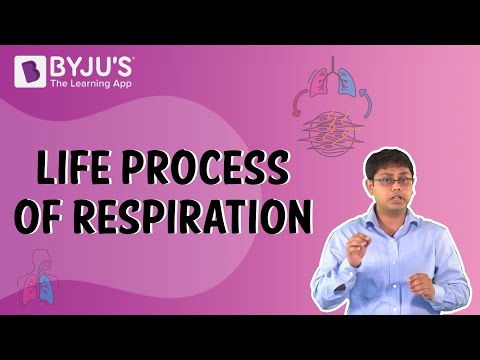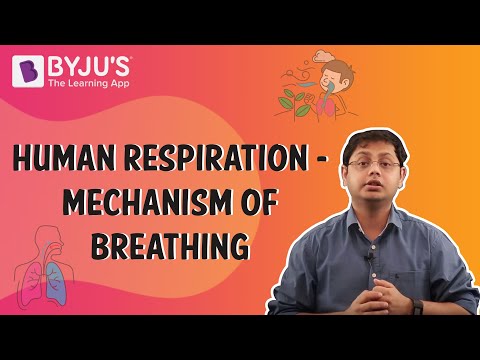According to the CBSE Syllabus 2023-24, this chapter has been renumbered as Chapter 6.
Breathing vs. Respiration
Respiration
- Respiration is the process of gaseous exchange in an organism.
- Respiration at a cellular level, however, refers to the burning of food to obtain energy.
For more information on Respiration, watch the below video

To know more about Respiration, visit here.
Breathing
- Breathing is the process of taking in oxygen and giving out carbon dioxide by the organism.
- Every organism has its own methods of breathing.
- Every human breathes through the lungs.
- Organisms like, fish breathes through the gills.
For more information on the Mechanism of Breathing, watch the below video

To know more about “Mechanism of Breathing”, visit here.
Process of respiration
- The oxygen in the lungs is taken up by the blood.
- This oxygen is then transported to all parts of the body.
- Blood gives up oxygen to the cells and takes up carbon dioxide, which is sent back to the lungs.
Diffusion
- Diffusion is the process of movement of molecules from the area of their lower concentration to the area of their higher concentration without any application of energy.
- Diffusion is what happens when you put a drop of ink in water, and it slowly mixes with the water uniformly.
- The same principle is used for the exchange of gases (breathing) in animals.
Cellular respiration
- When the cells obtain oxygen from the blood, they use up this oxygen to burn the food.
- Burning of food releases energy which is stored in the form of ATP.
- Thus respiration at the cellular level is the burning of food using oxygen to get energy.
To know more about Cellular Respiration, visit here.
Aerobic vs. Anaerobic
Aerobic respiration
The type of respiration in which organisms use oxygen for burning food inside the cell is called aerobic respiration.
Anaerobic respiration
Respiration in a cell in the absence of oxygen is called anaerobic respiration.
To know more about aerobic and anaerobic, visit here.
How Do We Breathe?
Components of the respiratory system in Humans
The respiratory system of the humans have several parts; the Nasal chamber, pharynx, larynx, trachea, bronchi, lungs, and diaphragm.
The process of respiration in humans
- Respiration in humans starts with the breathing of air through the nose leading to the oxygen being transferred into the bloodstream by the lungs.
- This oxygen is delivered to all the cells, which uses them to burn glucose and generate energy.
Respiration in other organisms
- Respiration in other organisms is carried out by special organs.
- Frogs and earthworm use their moist skin, fishes use gills, and insects have spiracles.
Gaseous exchange in plants
- Gaseous exchange in plants occurs through stomata in leaves and through root hair in roots.
- The woody stems of plants have lenticels, too for the exchange of respiratory gases.
Frequently Asked Questions on CBSE Class 7 Science Notes Chapter 10 Respiration in Organisms
What is meaning of diffusion?
Diffusion is the process resulting from the random motion of molecules by which there is a net flow of matter from a region of high concentration to a region of low concentration.
What is the meaning of respiration?
The process of breakdown of food in the cell with the release of energy is called cellular respiration.
Which parts of the plants help in gaseous exchange?
Gaseous exchange in plants is achieved by stomata and lenticels.
Comments